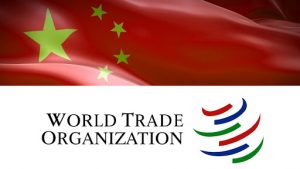
Originally, I started this piece lamenting the ‘failed’ effort to bring China into the global economy following the failure by the CCP – the Party, and the Chinese government to continue early encouraging domestic economic reform efforts in the Chinese economy. That failure has given rise to very negative consequences for the global economy and the central economic players – the United States and the other North American economies, Europe and various players in the Indo-Pacific including Japan, South Korea and others. I was preparing this week’s Post, reviewing in part a very good piece by Michael Froman, former USTR. And, in fact, I’ll get to that tale in just a moment. But it is impossible right now to overlook the destructiveness that President Trump is now bringing to the global economy, especially to America’s economic allies and partners with his thoughtless tariffs on steel and aluminum, now automobiles and very soon apparently reciprocal tariffs against seemingly all goods on what he, Trump, has come to call ‘Liberation Day’. Some liberation!
It is hard to look at Trump’s most recent tariff actions vis a vis cars and not reflect on the long – decades long effort – to integrate the three North American economies – Canada, US and Mexico – and despair over Trump’s sudden unprovoked effort to tear down the integrated economies of North America. At least in Trump 1.0 he had the decency to renegotiate NAFTA and agree on USMCA terms of trade raising the percentage of North American content. But who cares about such negotiated free trade agreements under Trump 2.0? As described by Damien Cave and Steven Erlanger in their NYTimes piece, these are Trump’s current tariff actions:
“Many of the countries most affected by the new levies, such as South Korea, Japan, Germany, Mexico and Canada, are already reeling from the Trump team’s disregard for free trade deals already signed and his threats to long-established security relationships.”
“Prime Minister Mark Carney of Canada said on Wednesday that Trump’s move on tariffs was “a direct attack.” Ursula von der Leyen, president of the European Commission, said the result would be “bad for businesses” and “worse for consumers.” Robert Habeck, Germany’s acting economics minister, said, “It is now important for the E.U. to respond decisively to the tariffs — it must be clear that we will not back down in the face of the U.S.””
As these reporters pointed out, the Trump actions and allied responses could end in the following very negative way:
“The tariffs, which threaten both American and foreign carmakers, increase the likelihood of a global trade war. A chain reaction of economic nationalism with tariffs and other measures — perhaps adding costs for finance and services — could suppress economic growth globally, spread inflation and add rancor to already testy negotiations with Washington about security.”
Ugh, a global trade war. Just what the globe doesn’t need. But Trump policy marches on and there is the real prospect for cranking up the drama:
“The Trump White House has sought to use every tool of American power, including its military support and consumer market, to extract what Mr. Trump sees as a better deal for Americans. But for countries that have spent decades trusting America and tying their economies and defense plans to Washington’s promises, this feels like a moment of reversal.”
“American influence, long built on pronouncements about values and the shared riches of free trade, has hardened into what many analysts describe as “all stick, no carrot.” In the Trump team’s thinking, critics argue, American gains require pain for others — friends included.”
So that’s the immediate dismaying state of the global economy largely brought to you by Trump 2.0. But there is still reason to dwell a bit on the impact to the global economy of China’s dramatic global economic emergence. This dramatic and in part negative influence on the US, and Trump for sure, but others as well, has added to the downbeat actions from the US and others.
We’ve never quite recovered from it – that is China’s incorporation into the global economy. Even today strong echoes of a now rather distant debate still can be heard. That debate was, and is, a hard discussion by both experts and former officials. That debate was, and is, over China’s incorporation into the global economy and the decision to provide China with membership in the WTO. I was reminded of this in a strong review piece of China’s integration into the global economy by Michael Froman. Froman is today President of the Council on Foreign Relations. He served, however, as U.S. Trade Representative (USTR) from 2013 to 2017 and before that he was Deputy National Security Adviser for International Economic Affairs from 2009 to 2013. In an article in Foreign Affairs entitled, “China Has Already Remade the International System: How the World Adopted Beijing’s Economic Playbook” he reviews China’s integration and its consequences for the condition of the global economy. While there are outstanding questions on whether more should have been insisted on by WTO members especially in terms of reform of China’s economy before permitting its entry to the global economy, it is largely in the rearview mirror today. There was a long discussion and back and forth at the time of discussions for China’s accession to the WTO, especially between the United States and China. Much of it concerned whether China was a market enough economy to enable it to integrate into the global economy and to gain membership to the WTO. As Froman notes:
“Jiang [Zemin] and Zhu [Rongji] declared repeatedly that China would inevitably continue to open up. Many in the West went so far as to believe that this economic liberalization would lead to China’s political liberalization, that a capitalist society would become a more democratic one over time.”
“That assumption proved false. China’s leaders never seriously contemplated political reform, but China’s economic advancement was impressive nonetheless. The country’s GDP grew from $347.77 billion in 1989 to $1.66 trillion by 2003 to $17.79 trillion in 2023, according to the World Bank. Hopes were high that integrating China into the rules-based trading system could lead to a more peaceful and more prosperous world.”
“Then President Hu Jintao entered the picture, followed by President Xi Jinping. China’s economic trajectory turned out to be less linear and less inevitable than initially expected. Under Hu, China leaned more heavily into state intervention in the economy by aiming to create “national champions” in strategic sectors through massive subsidies. In other words, the government expanded its role rather than pursuing further market liberalization.”
“In 2004, China made up nine percent of the world’s manufacturing value added, leapfrogging to a massive 29 percent in 2023, according to the World Bank.”
I am particularly reminded of all of this because of a very small role I played in the lengthy effort to secure China’s accession to the WTO. I worked with a former trade official in trying to address various questions over China’s economy and its reform trajectory following the many Working Party meetings on China’s accession at the WTO in Geneva. It was a several years process. As a successful conclusion approached I remember, vividly, the comment by that official after all those many gatherings and discussions over several years that it was a mistake to permit China’s accession at that time. That official had reached the conclusion that China was not ready for economic integration in the global trading system.
But China’s accession did occur. And it became clear that the market reform process in China had slowed and then died. And the US actions are now in part as a result. Again here is Michael Froman:
“In 2009, the Obama administration led an effort to terminate the Doha Round—a multilateral trade negotiation under the WTO launched in 2001. It did so in large part because the resulting agreement would have enshrined China permanently as a “developing country” under WTO rules. This would have allowed China to enjoy “special and differential treatment,” which meant that China would have been able to avoid assuming the same level of obligations and disciplines—on market access, intellectual property rights protection, and other issues—as the United States and other industrial countries.”
“Similar concerns motivated the Obama administration to pursue the Trans-Pacific Partnership (TPP), a high-standard trade agreement negotiated among 12 countries around the Pacific Rim. This initiative was designed to give countries in the Asia-Pacific region an attractive alternative to the model China offered.”
“By the time TPP negotiations were completed in 2015, however, trade agreements—even those designed to counterbalance China—had become politically toxic at home, and the United States ended up pulling out of the agreement.”
As Froman then summarizes his trade role and his warnings to China:
“From 2009 to 2017, I served first as deputy national security adviser for international economic affairs and then as U.S. trade representative. During that time, I consistently warned my Chinese counterparts that the benign international environment that had enabled China’s success would disappear unless Beijing modified its predatory economic policies. Instead, China largely maintained its course of action. If anything, it doubled down on its approach. When Xi came to power in 2012, he effectively ended the era of “reform and opening” that had already stalled under Hu, set China on a course to dominate critical technologies, increased production to the point of overcapacity, and committed to export-led growth.”
And he concludes:
“Today, as the economist Brad Setser has noted, China’s export volume is growing at a rate three times as fast as global trade. In the automotive sector, it is on a trajectory to have the capacity to produce two-thirds of the world’s automotive demand. And its dominance extends beyond cars; China also produces more than half the global supply of steel, aluminum, and ships.”
“Eventually, even American businesses, which had always been the ballast in the bilateral relationship, soured on China as their intellectual property was stolen or forcibly licensed, their market access to China was severely restricted or delayed, and China’s subsidies and preferences for domestic firms ate into their opportunity. Without any semblance of reciprocity, the relationship deteriorated. Politicians of both parties and the American public hardened their stance on China. European and major emerging economies grew hostile to Beijing’s policies, as well. In short, the benign international environment disappeared.”
So that then is in part how we got to the difficult situation we are now in in global trade and why Froman concludes that Trump global economic policymaking mirrors today China economic policy: “The United States and others are imitating China in large part because China succeeded in a way that was unexpected. Its success in electric vehicles and clean technology did not come from liberalizing economic policies but from state interventions in the market in the name of nationalist objectives. Whether or not the United States can compete with China on China’s playing field, it is important to recognize a fundamental truth: the United States is now operating largely in accordance with Beijing’s standards, with a new economic model characterized by protectionism, constraints on foreign investment, subsidies, and industrial policy—essentially nationalist state capitalism.”
Where we are today is certainly not where advanced economies at least believed we should be. The Trump aping of state nationalist efforts through repeated rounds of tariffs and other protectionist measures has the feel and smell of defeat and bad, very bad Washington global economic policy making.
Image Credit: it.china-office.gov.cn
This Post first appeared at my Substack, Alan’s Newsletter. https://globalsummitryproject.substack.com/p/killing-the-golden-goose-integration

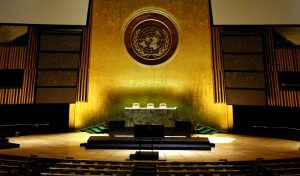
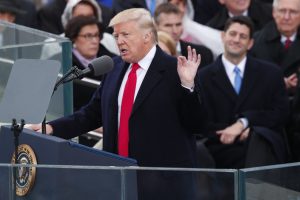
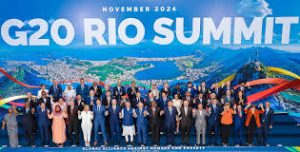
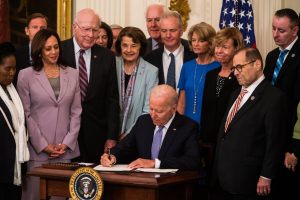
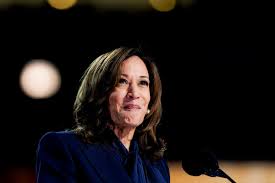 With just over 70 days until the US election, and with the certainty now of a new 47th President – either Harris or former President Trump – it is not surprising that analysts are scrambling to assess the current US foreign policy course and eyeing its new possible directions.
With just over 70 days until the US election, and with the certainty now of a new 47th President – either Harris or former President Trump – it is not surprising that analysts are scrambling to assess the current US foreign policy course and eyeing its new possible directions.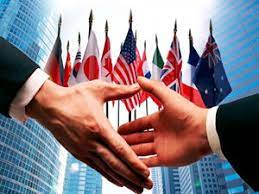
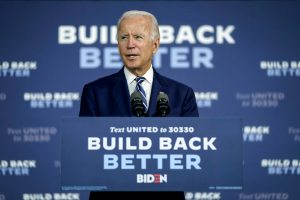

 So, the International Studies Association (ISA) just concluded in Montreal
So, the International Studies Association (ISA) just concluded in Montreal